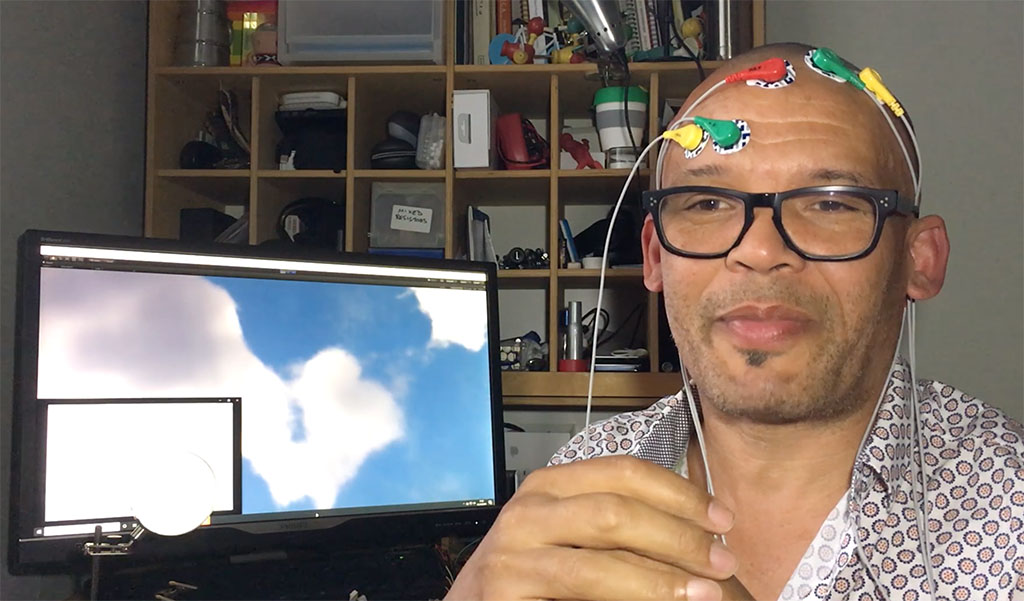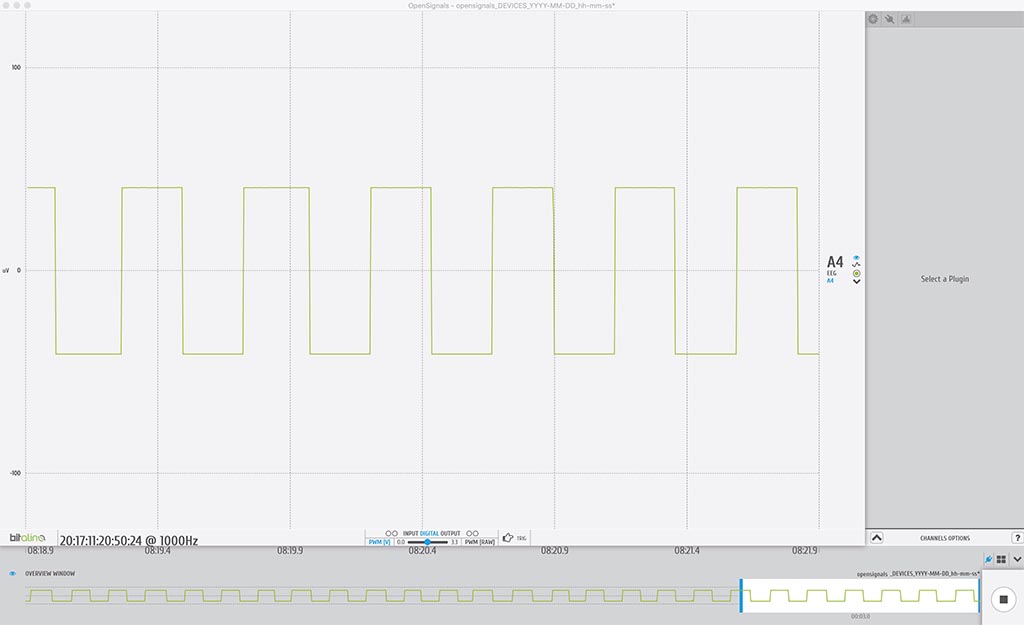Tuesday, October 08, 2019

In the last post I managed to get all four sensors wired up to the Bitalino MCU and started seeing some data over bluetooth in the OpenSignals app. But that data was pretty much rubbish for at least two of the sensors. The job now is to figure out why and to hopefully get all four sensors sending something reasonable.
First the EEG. There are many factors that could cause the sensor to give bad data, both hardware and software, including:
- Incorrect wiring
- Poor electrode contact
- Electromagnetic interference
- Bad sensor placement
- Faulty components
- Bluetooth issues
- Badly written software
Some of these are more likely than others. It is unlikely (but not impossible) that the errors arise from factors outside my front room so I’ll discount ‘badly written software’ and ‘faulty components’ for now and concentrate on the things I have some control over.
I double check the wiring and unplug all but the EEG module. I clean the electrodes, re-apply conductive paste and slap them on my head again. I already know that EM interference is an issue if I leave the components on my desk so I move them across the room and try again. Still not good. I unplug the sensor to see what residual signal is being generated and it’s really noisy. I remember reading that wrapping the circuit in aluminium foil can shield it from EM interference so I give that a go. Short out the contacts. Try again while protecting the contacts from the foil. Now I get what looks more promising - a kind of square waveform.

I hook the sensor back in and start a new session. This looks much better. It’s still kinda noisy at times - pressing the electrodes onto my head greatly affects the signal (to be expected). But when I apply the correct pressure I get a signa that looks like it should. I am currently using the re-usable electrodes so I hope that if I use the pre-gelled disposables I will get a better signal still. Ultimately some kind of cap or device to allow accurate, repeatable placement with just the right amount of pressure will be necessary but for now I think this is good.